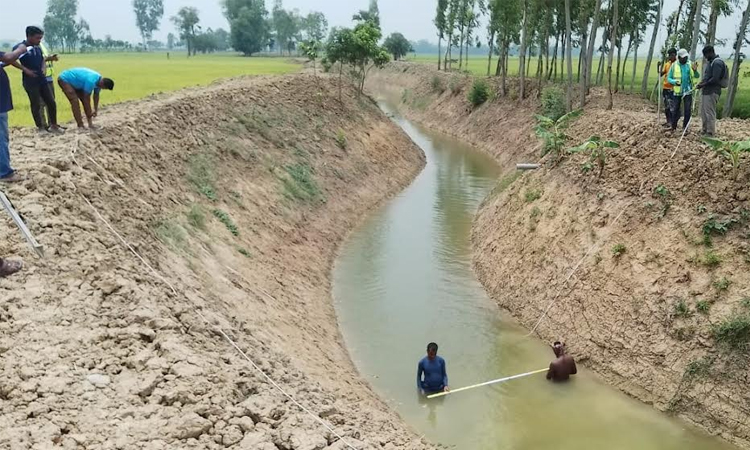News Flash

By Md Aynal Haque
RAJSHAHI, May 9, 2025 (BSS) - Over 2.50 lakh marginalized families, badly affected by the adverse impacts of climate change, will get access to water for drinking, farming, and other household purposes in the drought-prone Barind region.
To increase the resilience of climate-vulnerable communities and improve the quality of life and livelihoods, Palli Karma-Sahayak Foundation (PKSF) has begun implementing a project financially supported by the Green Climate Fund (GCF).
The "Extended Community Climate Change Project-Drought (ECCCP-Drought)" is being carried out in 14 upazilas across Rajshahi, Chapainawabganj, and Naogaon districts. It aims to address climate change impacts through various interventions at an estimated cost of around Tk 300 crore.
Key components of the project include building the capacity of government and private institutions on climate change, artificially recharging underground water, re-excavating ponds and canals, and expanding the cultivation of drought-tolerant crops.
As part of promoting the Managed Aquifer Recharge (MAR) technique, 2,500 rooftop-based MAR systems will replenish about five lakh cubic meters of water into the aquifer annually, increasing access to drinking water in targeted communities.
Additionally, 40 injection wells in ponds will refill four lakh cubic meters of water annually, while the ponds will preserve about 1.5 lakh cubic meters as surface storage.
Ultimately, the MAR technique aims to promote the sustainable use of groundwater resources.
To create drought-resilient livelihoods through sustainable agriculture, drought-adaptive cropping patterns will be introduced.
The cropping pattern will include at least rice, wheat, and mung bean on the same land within a year. The crops will be selected based on their tolerance to moisture stress, production cycle duration, and water requirements.
Around 15,000 farmers will be engaged in these drought-adaptive cropping practices.
Under the scheme, 3,500 hectares of land will be brought under irrigation after rehabilitating 140 kilometers of canals in the three districts.
The four-year project also includes promoting fruit trees, which require minimal water, alongside cotton, which has high agronomic and economic potential.
These initiatives will help beneficiary farmers increase agricultural productivity and income, while reducing water use for agriculture by at least 70 percent.
Detailing the project, ECCCP-Drought Project Coordinator Rabi Uzzaman said climate change is altering the nature of droughts in the Barind tract by raising temperatures and increasing rainfall variability, posing serious threats to people's lives and livelihoods.
Broadly, the region now faces unpredictable droughts due to inadequate and uneven rainfall, which affects the timing of monsoon onset and withdrawal.
Sharing his expertise, Prof Chowdhury Sarwar Jahan of the Department of Geology and Mining at Rajshahi University noted that the Barind region is among the worst-hit by droughts, with the number of consecutive dry days and temperature steadily increasing over the past 30 years.
Drought episodes have become more erratic due to climate change-a trend likely to worsen in the coming decades.
Prof Chowdhury said droughts create severe challenges for vulnerable communities.
During dry spells, most natural surface water sources evaporate, leaving no water for drinking, sanitation, or agriculture.
Overall, the human cost includes higher disease incidence-especially among children-malnutrition from crop failure, increased poverty, and stunted development.
The Barind's average annual rainfall of 1,400 mm is far below the national average of 2,300 mm. Rainwater does not easily seep into aquifers due to clay soils with low porosity, leading to high evaporation.
Moreover, there are no large or deep surface water sources-like lakes or rivers-so groundwater recharge is very slow.
During droughts, people traditionally use hand-pumped tube wells, which draw from shallow aquifers dependent on seasonal rainfall. However, under current drought regimes, these aquifers dry up, rendering tube wells ineffective.
Rabi Uzzaman said the project aims to tackle these drought-related challenges through better water management, climate-adaptive technologies, infrastructure maintenance, and planning for irrigation and domestic use.
It also seeks to reduce water needs by promoting low-water crops in the dry season-cutting irrigation demand by 70 percent during winter.
Additionally, the scheme will increase water access points for drinking purposes, thereby reducing the burden on women.